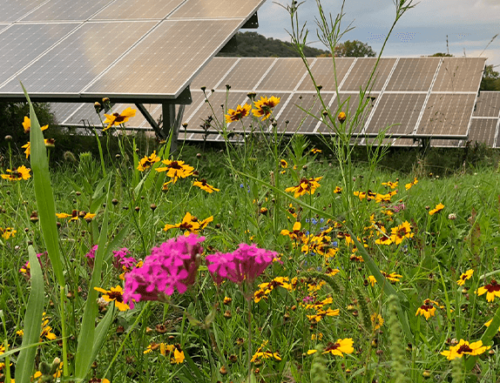When you use electricity matters as much as how much electricity you use. Most electricity users are on a Time-of-Use (TOU) rate plan, which supports the state’s transition to cleaner energy while maintaining energy reliability. TOU rates help reduce carbon emissions by decreasing the need for fossil fuel resources and increasing the usage of solar and other renewable resources.
What is the TOU rate plan?
Compared to tiered rates, TOU pricing more accurately reflects the cost of electricity at the time you consume it. When electric demand is high, higher (peak) prices for energy are charged. During hours when consumption and demand are lower, lower (off-peak) prices for energy are charged. For small and medium businesses, this rate varies based on the time of year.
Most businesses experience peak rates from 4−9 p.m. every day including weekends and holidays. Older rate plans still offer peak times from 12−6 p.m. Monday through Friday except holidays. Switching to a new rate plan with an evening peak could help your business save money. Log in to your PG&E account with one of the following links to determine which rate plan you’re on and see personalized rate comparisons:
What is the benefit of TOU?
The TOU pricing structure encourages you to use electricity when demand is lower and power is cheaper. This helps to alleviate strain on the electric grid during peak times. TOU rates also support a cleaner power grid by encouraging energy use during times when renewables are abundant. Solar production typically peaks in the early afternoon, and wind energy peaks in the evening. Energy demand tends to spike from 4−9 p.m., when renewable energy resources aren’t at their highest production. Without energy conservation during this time, polluting fossil fuel power plants are more likely to be switched on.

How does TOU benefit the environment?
TOU rates benefit the environment by encouraging you to shift your electricity usage to times of the day when solar energy is readily available and away from the times when the grid is mostly powered by fossil fuels. Shifting your major electricity consumption outside the 4−9 p.m. peak means that there is less need for fossil fuel generation during high demand hours. If you can shift your load into the midday hours (12−4 p.m.), you can clean laundry, cook dinner, and cool your home with energy produced largely from solar and other renewable sources.
Reducing fossil fuel use improves environmental and health outcomes, including:
Can TOU rates save you money?
Absolutely! When you‘re on a TOU rate plan, you can benefit from lower rates by shifting your energy consumption to off-peak hours. Not only will you lower your bill, but you will also support California’s clean energy future.
What can I do to lower my bill on the TOU plan?
Small adjustments can make it easy to lower your bill with a TOU rate plan.
- Run major appliances (dishwashers, washers, dryers, ovens) before 4 p.m. or after 9 p.m.
- When you use electricity during peak hours, make small adjustments like raising the temperature on your thermostat to 78 degrees in the warmer months, using natural lighting from windows, and unplugging appliances that you aren’t using.
- Implement energy efficiency upgrades that reduce your usage overall. Easy upgrades include adding insulation, swapping out old light bulbs, and cleaning your air filters.
How can MCE help?
For businesses, MCE offers programs to reduce your carbon footprint and help lower your energy consumption and your bill.
- Our Strategic Energy Management program can help you reduce your energy usage by 3−15% by implementing operational changes that can save you money.
- MCE’s Commercial Energy Efficiency program offers rebates for energy savings measures that further lower your bill.
How can I help my employees learn about TOU rates?
Most residential customers are now transitioned to a TOU rate. Help your employees conserve energy by encouraging smart energy practices at work and at home. For example, for employees who drive an EV, take advantage of MCE’s EV charging station program to offer EV charging for your employees at work. This rebate program encourages EV charging during the middle of the day when solar energy is readily available, shifting load out of peak hours.






